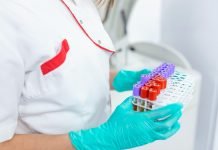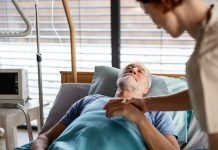
For the many people who suffer a stroke every year, there’s now a glimmer of hope. The University of Houston has tested a new device that can help with stroke recovery right at home.
It’s a special headset that connects the patient’s brain to robotic aids, helping them in rehabilitation.
The device is a brain-computer interface (BCI). Professor Jose Luis Contreras-Vidal, a leader in this field, described it as a wireless headset that can read brain signals.
It’s like the device can “listen” to what your brain is saying. When your brain thinks of a movement, the device can help make that movement happen with the help of robotic aids.
How It Works
The headset is designed using easily available components, making it affordable. It has a special design which ensures it fits well and can read the brain’s signals accurately.
This device reads the brain’s activity using something called EEG, which captures the brain’s electrical signals.
When it reads a signal of intending to move, it can send this to a robotic device to help with that movement. This is especially helpful for stroke patients who often struggle to move as they did before the stroke.
What’s exciting is that this device doesn’t just help with movement. By using it, the brain can also heal and adapt after a stroke. This process is known as cortical plasticity, and it can boost recovery.
Benefits Over Existing Systems
There are other systems out there that read brain signals. But many of them are expensive, hard to use outside a hospital or lab, or simply not effective enough.
This new invention from the University of Houston stands out. It’s portable, easy to use, and doesn’t need any complex setup.
Professor Contreras-Vidal points out the many advantages of this system. Unlike many others, it’s not tied down to a fixed spot.
You can use it at home, at work, or even while relaxing. Plus, it’s designed to be affordable, solving a big problem many patients face with the high costs of medical equipment.
Looking Ahead
This new brain-computer interface is a big step forward in helping stroke patients get back on their feet. It’s not just a device; it’s a beacon of hope for many who once thought they might not move normally again.
As it becomes more available, it promises to transform rehabilitation and bring newfound independence to those recovering from a stroke.
If you care about stroke, please read studies about what are ideal blood sugar levels for preventing repeat strokes, heart attacks, and this healthy habit can lower risks of stroke and heart rhythm problems.
For more information about stroke, please see recent studies about therapy that could boost recovery from stroke and dementia, and results showing these 3 common prescribed drugs may increase stroke risk by 60%.
The study was published in Sensors.
Follow us on Twitter for more articles about this topic.
Copyright © 2023 Knowridge Science Report. All rights reserved.




